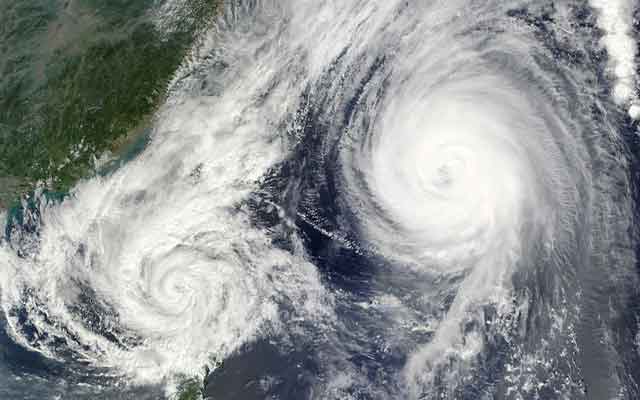What's the Difference? Hurricane, Cyclone, Typhoon, Monsoon, and Other Storms Explained
Hurricane, Cyclone, Typhoon: Understanding the Regional Differences
Reading time : 1 minute,
Discovery Chepe Id-762-ECO
Published in
06-20-2025

Weather phenomena can be confusing, especially when similar terms like hurricane, cyclone, and typhoon are used interchangeably. Each of these natural events carries unique characteristics, locations, and impacts. In this article, we will clarify these differences with a human touch and clear explanations, helping you better understand these powerful forces of nature.
Hurricane, Cyclone, and Typhoon: What's the Difference?
These three names actually refer to the same type of storma tropical cyclone with strong winds and heavy rain but they occur in different parts of the world.
1- Hurricane: Used for storms forming in the Atlantic Ocean and the northeastern Pacific Ocean.
2- Typhoon: The name given to tropical cyclones in the northwestern Pacific Ocean, especially around East Asia.
3- Cyclone: Refers to storms in the Indian Ocean and the South Pacific.
All these storms have sustained winds of at least 74 mph (119 km/h) and can cause devastating damage to coastal and inland areas.
Tropical Storms and Depressions
Before becoming hurricanes, these systems start as tropical depressions and then tropical storms. A tropical depression has winds less than 39 mph (63 km/h), while a tropical storm has winds between 39 and 73 mph (63-118 km/h). These stages often bring heavy rain and gusty winds but are less intense than hurricanes.

A Comprehensive Guide to Hurricanes, Cyclones, Typhoons, Monsoons, and Other Meteorological Phenomen
Monsoons: Seasonal Wind Patterns with Big Impact
Unlike storms, monsoons are large-scale seasonal wind shifts that bring heavy rains, especially in South Asia. They are critical for agriculture but can also cause flooding and landslides.
Storms and Thunderstorms
The term storm is broad and includes any weather event with strong winds and precipitation. Thunderstorms specifically involve lightning, thunder, and heavy rain. They can occur anywhere and are often short-lived but sometimes severe.
Tornadoes: Small But Deadly
A tornado is a violently rotating column of air extending from a thunderstorm to the ground. Though smaller in size than hurricanes, tornadoes can have wind speeds exceeding 300 mph (480 km/h), causing localized but intense destruction.
Why Knowing These Differences Matters
Understanding the distinctions helps us prepare and respond properly when warnings are issued. For example:
a) Recognizing a typhoon warning means being alert to impacts in East Asia.
b) A monsoon season calls for readiness against flooding over months.
c) A tornado watch means immediate safety precautions for your location.
For more detailed information on tropical cyclones, you can visit the National Hurricane Center or the World Meteorological Organization.
See Also
Discovery Chepe
Most read...















